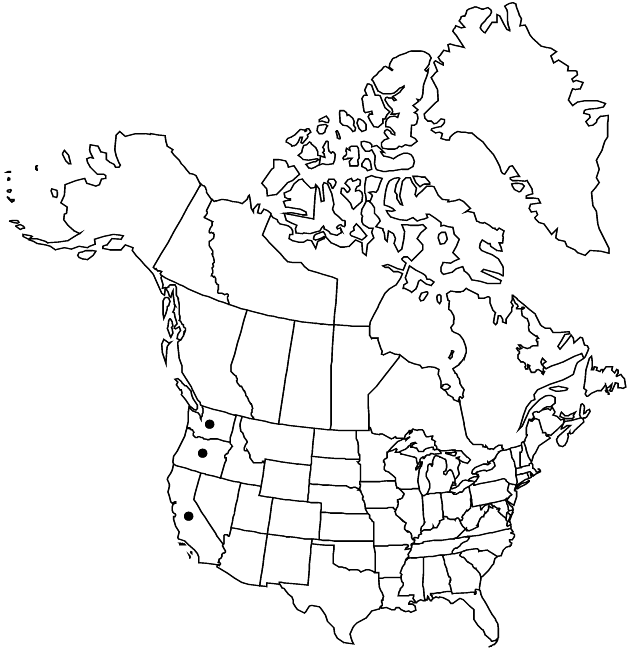Hulsea nana
in War Department [U.S.], Pacif. Railr. Rep. 6(3): 76, plate 13. 1858.
Perennials, 5–15(–20) cm. Stems 1–7, glandular-puberulent and sparsely lanate. Leaves mostly basal; blades narrowly spatulate, 2–6 cm, margins lobed or toothed (lobes or teeth mostly oblong), faces sparsely lanate to woolly; distal cauline leaves narrowly lanceolate, much reduced. Heads 1. Involucres obconic, 8–12 mm diam. Phyllaries 8–12 mm, outer narrowly obovate to oblong-lanceolate, apices acuminate to acute. Ray florets 12–30; corolla tubes glabrous, laminae yellow, 6–10 mm. Disc corollas yellow. Cypselae 6–8 mm; pappus scales subequal, 1–2 mm. 2n = 38.
Phenology: Flowering summer.
Habitat: Subalpine to alpine rocky slopes, taluses, mostly volcanic substrates
Elevation: 2400–3000 m
Distribution

Calif., Oreg., Wash.
Discussion
Densely lanate or woolly plants of Hulsea nana are referable to var. larsenii. Such plants may occur in distinct populations but can be found together with sparsely lanate and strictly glandular plants. The distribution of lanate to woolly plants appears associated with higher levels of insolation.
Selected References
None.